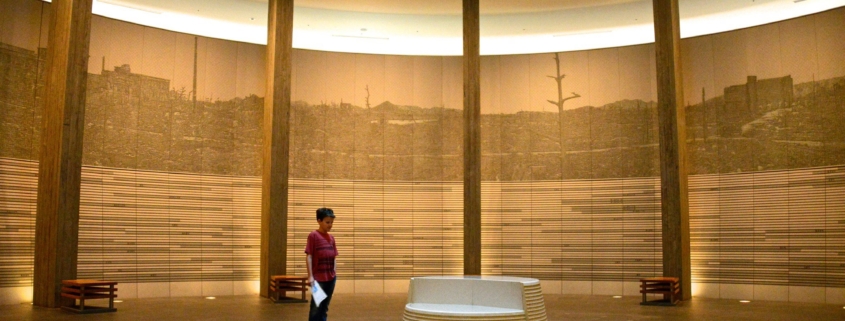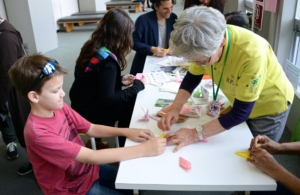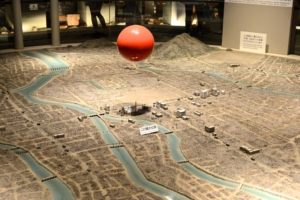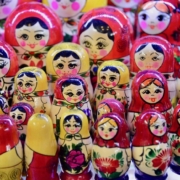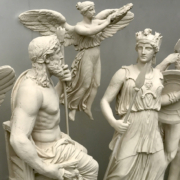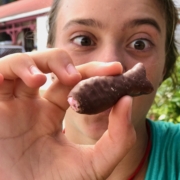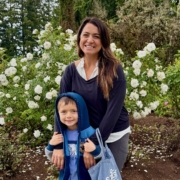Stories From the Road: Paper Cranes in Hiroshima
Another “Story from the Road” by Mark Heisten
Sadako Sasaki was only two years old when the A-bomb devastated Hiroshima. Initially one of the lucky ones who survived the blast, she showed no signs of injury and grew into a healthy young girl until the age of nine. An illness was then revealed to be leukemia and Sadako, which means ‘innocent child,’ began a fight for her life. Believing that folding colorful paper cranes helped in her healing process, she spent
the last eight months of her life folding countless graceful cranes with delicate hands. Sadly, the lingering effects of the bombs kept killing long after schools were rebuilt and normal services were restored in Hiroshima and Nagasaki. The A-bomb was dropped on Hiroshima on August, 6 1945 at 8:16am; Sadako Sasaki died on October 25, 1955. It is estimated that more than 10 million cranes are offered each year at the Children’s Peace Monument in Hiroshima.
In a world locked in conflict over religious ideologies, it is challenging – if not impossible – to believe in the concept of universal truth. Common notions of freedom or justice or family have become objectified by opponents – tolerances narrowed to highlight differences, emotions amplified to spur action against those differences. Consider Auschwitz. Wounded Knee. Srebrenica. Ground Zero. Stalingrad. Yet, standing on ground where thousands of people lost their lives due to genocide or war, accident or terrorism is a coalescent function. It reminds us of the bird-bone fragility of life and that, after differences are discarded as superficial, we are human.
Hiroshima is one of the most sacred grounds in the history of the world, and in that it is a living legacy, a paradox. Seventy years ago, this broad valley with romantic views out to the sea was wholly destroyed – its buildings flattened and burned; its people poisoned and killed.
Yet today, atop that solemn foundation, it is vibrant and bustling with people pulsing through its avenues, visiting shops and restaurants as illuminated as a Saturday-night carnival. It is very much a place of living; it shows almost no scars.
The Hiroshima Peace Memorial Museum is a collection of artifacts that survived the blast. There are many physical exhibits that show technically amazing things, such as two-inch-thick rolled steel beams that were twisted into abstractions, or hundreds of apothecary jars that had been melted into a solid chunk of glass.
There’s also the pocket watch owned by Kengo Nikawa, frozen at 8:16am. It was a gift from his son and something he considered precious. He died a little more than two weeks later from grievous injuries sustained in the blast. Kengo had been riding his bike to work.
There’s the tattered and ash-streaked uniform worn by Nobuko Oshita, a 13-year-old student at the girls’ high school. After being exposed to the bomb, she fled into hiding with a classmate, where relief workers found her and returned her home to her family. Nobuko died the following day, still wearing the uniform she’d made.
And there’s the lunch box of Shigeru Orimen, a junior-high school student whose body was found nearly four days later by his mother. Shigeru had been tending the family’s garden while his father and brother were away at the front. His lunchbox contained a meal made from his first harvest – something he was so proud of yet never tasted.
This museum, like the Normandy American Cemetery and the Memorial to the Murdered Jews of Europe, left an indelible mark on our psyche. It is a powerfully moving place filled with stories that raise unanswerable questions. The boys were exhausted and silent as we walked from the darkened exhibit hall back into the lighted gallery that looks out across the park, the A-Bomb Dome silhouetted against the blue sky. There, along the windows, Asher found a table where local volunteers were teaching kids how to make paper cranes. He sat down with Angela and decided to make an offering of peace in honor of Sadako Sasaki.

